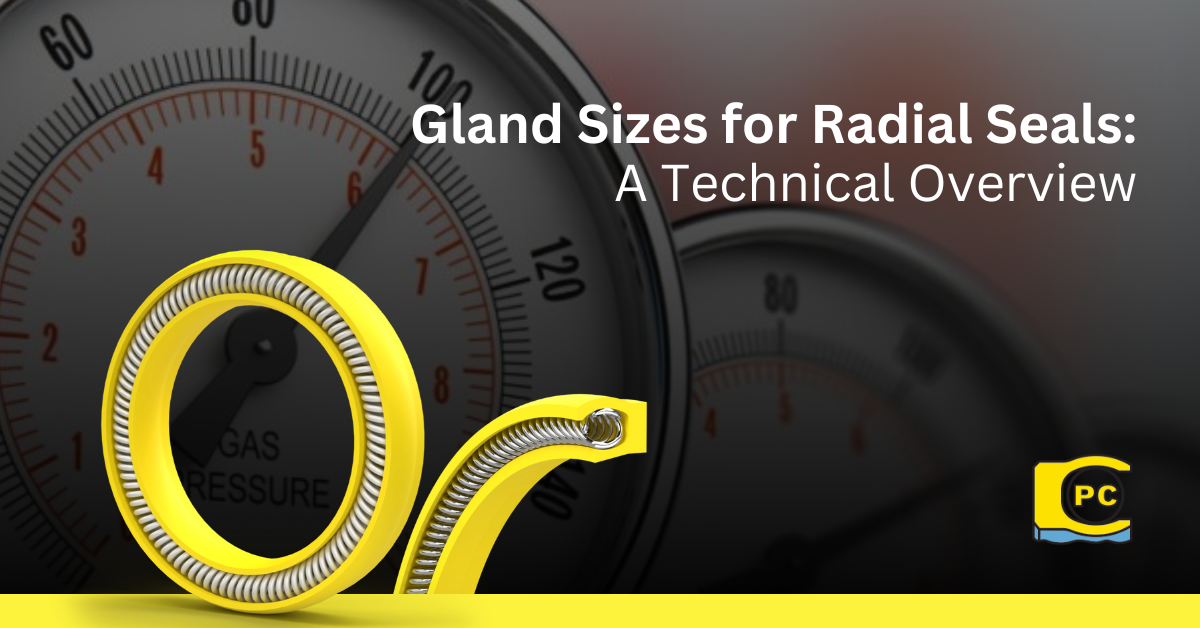Introduction
Radial seals are integral components in various industrial applications that demand high reliability and durability. These seals play a crucial role in preventing leakage and maintaining the integrity of machinery under high-pressure and high-temperature conditions. The effectiveness of these seals is heavily dependent on the precise sizing of the glands they fit into, as even minor deviations can lead to significant performance issues.
This article provides a detailed examination of standard gland sizes, focusing on their significance, dimensions, and specific design considerations to enhance seal performance. We will delve into the different types of radial seals, the materials commonly used in their manufacture, and the critical factors influencing their selection and application. By understanding these aspects, engineers and technicians can make informed decisions that improve the longevity and efficiency of their equipment, ensuring optimal operation in demanding industrial environments.
Detailed Gland Dimensions for Radial Seals
Radial seal glands are meticulously engineered to accommodate seals in both static and dynamic applications. These applications typically involve rotating or reciprocating motion, ensuring that the seals maintain their integrity and performance under various mechanical stresses. Whether used in industrial machinery, automotive systems, or aerospace technologies, radial seal glands play a crucial role in preventing leaks and maintaining optimal functionality.

-1.jpg?width=1122&height=726&name=PCTI%20Gland%20Sizes%20Vs.%20Recommended%20Seal%20ID%20(1)-1.jpg)
Radial Seal Gland Dimensions (MIL-G-5514 and AS4716)
The MIL-G-5514 and AS4716 specification outlines standard dimensions and tolerances for radial seal glands used in high-performance aerospace applications. These standards ensure compatibility and reliability, setting precise tolerances for gland widths, depths. The adherence to these specifications is essential for maintaining seal integrity during operation, particularly in environments subject to extreme temperatures and pressures. Additionally, aerospace applications may have specific requirements that necessitate custom gland dimensions derived from MIL-G-5514 metrics. This standardization facilitates the interchangeability of components, reducing equipment downtime and enhancing overall operational efficiency.
Special Considerations for Gland Design
Proper Gland Geometry
Maintaining proper gland geometry is essential for preserving seal integrity and enhancing the overall performance of the system. This includes designing glands with adequate space to accommodate seal expansion due to thermal effects or pressure changes and preventing extrusion under high-pressure conditions. Proper gland geometry also ensures that the seal remains in place and operates effectively even under varying loads and movements.
Split or Separable Glands
Split or 2-piece gland designs are especially beneficial for applications involving pistons and rods, as they facilitate easier installation and maintenance. These designs allow for the gland to be assembled and disassembled without damaging the seal or other components, making it simpler to replace worn seals and reducing downtime. Additionally, split glands can be advantageous in confined spaces where traditional gland designs may be challenging to install.
Alternate Gland Designs
Alternate step designs can be employed to minimize stretching or distortion during assembly, ensuring that the seal remains intact and functional throughout its lifecycle. These designs can include features like stepped gland or chamfered edges that guide the seal into place without excessive force. Such considerations are crucial to prevent premature seal failure and extend the operational life of the equipment.
Installation Considerations
Proper Installation Tools
Using appropriate tools during seal installation prevents damage to the seal. Tools made from materials such as Delrin or nylon are preferred because they are less likely to cause cuts or abrasions to the seal jacket. These tools should be specifically designed for the type of seal being installed, taking into account the size and shape of the gland.
Installation Techniques
Adhering to recommended installation techniques, such as using lubricants and ensuring grooves are adequately prepared, is critical for maintaining seal performance. Lubricants can help reduce friction during installation for increased reliability. Ensuring that the gland grooves are clean and free of debris is essential to avoid contamination that could compromise the seal's effectiveness. Proper alignment and gentle pressure are also important to ensure that the seal sits correctly within the gland, providing a reliable seal throughout its service life.
Conclusion
Understanding and adhering to standard gland sizes is vital for the effective performance of radial seals. These seals are often used in demanding applications where precision is critical, such as in automotive, aerospace and industrial machinery. By maintaining proper gland geometry, which involves ensuring the correct dimensions and tolerances, and following best practices during installation, such as using the right lubrication and avoiding contamination, one can significantly enhance the reliability and longevity of these critical sealing solutions. Consistently applying these principles helps prevent leakage, reduce wear, and ultimately lead to more efficient and cost-effective operations.

